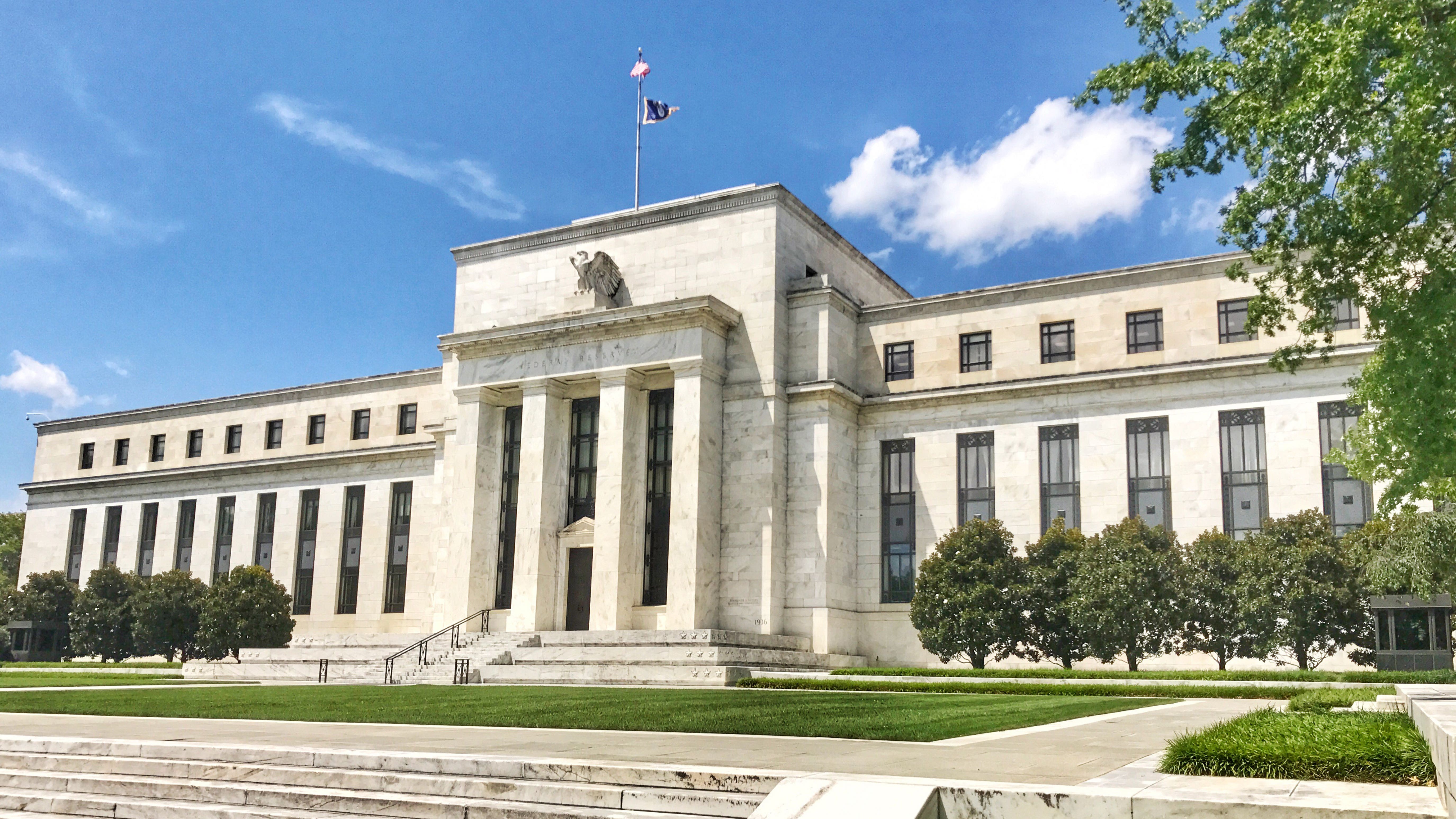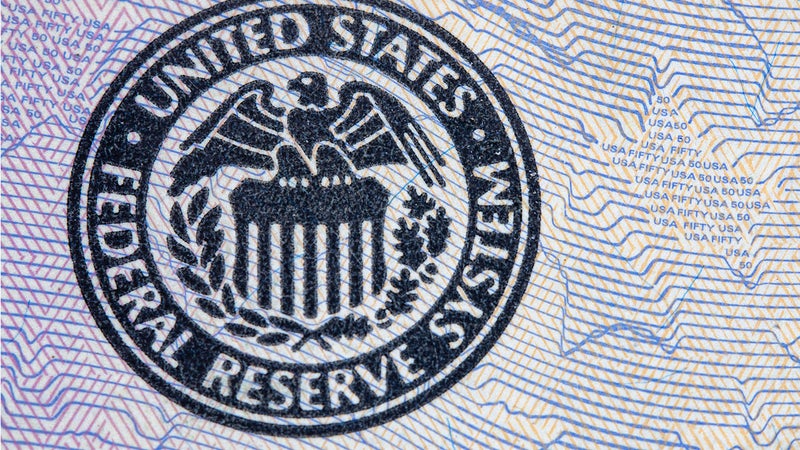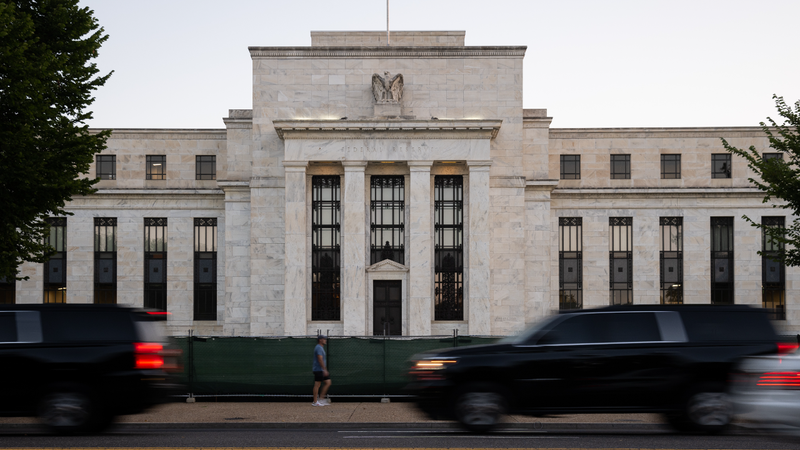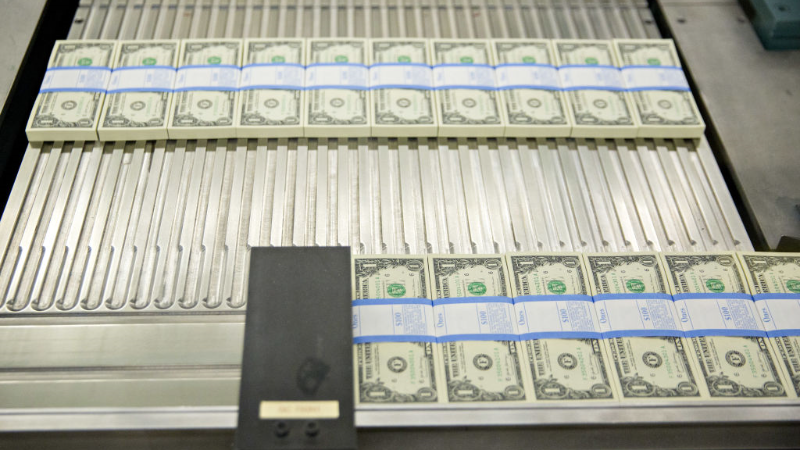What is the federal funds rate? How the Fed sets interest rates, explained

The Bankrate promise
At Bankrate we strive to help you make smarter financial decisions. While we adhere to strict , this post may contain references to products from our partners. Here's an explanation for .
Without interest rates, the Federal Reserve as we know it wouldn’t exist.
The Fed steers the world’s largest economy — its main job — by setting the price of borrowing money. Lower rates help boost household balance sheets and incentivize spending, bolstering economic growth. Higher interest rates, however, vacuum extra money out of the U.S. financial system, stomping on demand for new investments or goods.
Both have their goals: One helps the economy recover from recessions. The latter helps prevent rampant inflation or asset bubbles.
But how exactly the Fed makes sure interest rates fall in its desired target range is a tricky story. It’s not as if Fed officials set borrowing costs by going out and contacting every lender in the U.S.
Instead, the Fed has control over a benchmark rate that filters out through the rest of the economy known as the federal funds rate, or fed funds rate, for short. Here’s how the fed funds rate works and how it impacts you — whether you’re a saver or a borrower.
What is the federal funds rate?
The federal funds rate is the Fed’s main benchmark interest rate that influences how much consumers pay to borrow and how much they’re paid to save, rippling through to influence yields on certificates of deposit (CDs) and savings account to credit card rates and home equity lines of credit (HELOCs).
When you read headlines saying the Fed has hiked or cut interest rates, it means the Fed has voted to adjust this key borrowing rate.
“It serves as a basis for the pricing of savings instruments, like savings accounts or CDs and borrowing rates for consumers and businesses alike — everything from credit cards and home equity lines to small business loans,” says Greg McBride, CFA, Bankrate chief financial analyst.
Where is the federal funds rate’s current target range?
The Fed’s current benchmark interest rate is in a target range of 0.25-0.5 percent, but it is likely to soar even higher in 2022 as officials attempt to cool inflation. Investors are betting that the Fed will increase rates by 2.5 more percentage points, which would put the fed funds rate at its highest since 2008.
That benchmark rate has fallen to a target range as low as zero to 0.25 percent two times throughout history, first in the aftermath of the Great Recession and second during the coronavirus crisis. It soared to a target range as high as 19-20 percent when the Fed fought the last serious bout of inflation in December 1980.
How the fed funds rate works
Technically speaking, the fed funds rate filters through the economy because it’s the interest rate that banks charge each other for overnight lending to meet the Fed’s reserve requirements.
It sounds complicated, but it’s simpler than you think. In normal times (meaning, when the U.S. economy isn’t in a recession or financial crisis), the Fed requires banks to maintain a minimum balance in their accounts at the Fed — just as you’re likely often required to hold a certain amount of funds in your checking or savings account.
Some banks have more funds than they need. Others don’t have enough to meet those nightly requirements. The banks with ample cash then lend to the banks that need it. Of course, since no one wants to just lend freely, it comes with an interest rate. That’s where the fed funds rate comes in.
Of course, banks can’t charge each other a “range.” They typically settle the interest rate at the midpoint of the Fed’s target, though it tends to fluctuate. Known as the “effective federal funds rate,” this rate is influenced by market factors of supply and demand as well as the Fed.
But under the surface, the fed funds rate is tied to another little-known benchmark: the interest rate on reserve balances. Known as the IORB rate, it’s perhaps the fed funds rate’s most important best friend.
Explaining why requires a trip back to the financial crisis of 2008. Some banks liked to keep balances at the Fed well above the required level. Thus, the Fed started paying interest on banks’ currency holdings (known as the interest rate on required reserves, or IORR) as well as on their excess reserve balances (known as the interest rate on excess reserves, or IOER).
When those rates are low, banks would prefer to lend those funds out, during which they’d likely make a higher profit than keeping them in accounts at the Fed. That in turn lowers the cost of borrowing money in the economy because it increases the credit supply.
On the flip side, banks would prefer to keep more money at the Fed when rates are high, especially if it means they don’t have to lend to a potentially risky borrower. That increases the price of borrowing money because there’s less credit in circulation.
The Fed has been implementing policy in this way since the financial crisis of 2008, largely because banks have dramatically increased their currency holdings at the Fed. Before, the Fed would influence market rates by increasing the supply of banks’ reserves to balance out supply and demand. Extra cash in banks’ accounts would lower market rates. Less would increase interest rates.
“It’s a different means of accomplishing the same goal,” says Eric Sims, economics professor at the University of Notre Dame. “They want to change interest rates that are relevant to you and me, but they’re doing it in a different way now.”
During the depths of the catastrophic coronavirus pandemic, the Fed eliminated reserve requirements, a last-ditch effort to help get more credit flowing through the financial system. As a result, the Fed in July 2021 combined the IOER and IORR into one overarching rate: the interest on reserve balances, or IORB.
How the Fed decides what to do with interest rates
Understanding how this ultimately impacts the economy — and why the Fed does what it does — isn’t easy. The Fed’s work is mind-bogglingly complex.
The Fed has two main goals: stable prices and maximum employment. The Fed achieves those goals by raising or lowering interest rates.
If the U.S. economy were a car, the Fed would be one of its main drivers. Economic growth is the speed at which the vehicle is traveling — and interest rates are the foot pedals that give it more or less life.
It’s the driver’s job to give it enough speed to get it through the humps and hurdles, but not too much that it wrecks. Cheap borrowing costs give the U.S. economy more speed, propelling growth forward by bolstering asset prices and households’ wherewithal to spend. But more expensive rates cause firms to pull back on investing and hiring. That slows the economy down, no doubt influencing consumer spending along with it.
It’s easy to tell if the U.S. economy is in a downturn, mostly because unemployment tends to surge. But how does the Fed tell if the economy is running a bit too hot? By looking at inflation.
“Typically, interest rates and inflation go together,” says Gary Zimmerman, founder of MaxMyInterest.com. “In a period of high inflation, the Fed raises interest rates to slow down the economy.”
Yet, the sacrifice isn’t always an easy one. Interest rates are a blunt instrument, with the Fed having no way to fine-tune specific corners of the economy. Raising rates to cool inflation can mean sacrificing hiring; keeping rates too low to help more workers find work could run the economy hotter.
That trade off becomes especially difficult in times when inflation is soaring and unemployment is rising — a stagflationary environment that consumers last endured during the 1970s and ‘80s.
What interest rates are impacted by the federal funds rate?
Your wallet’s ultra sensitive to these rate moves. If it wasn’t, the economic impact would hardly be noticeable.
The Fed most notably has direct influence over CDs and savings accounts, and rates on auto loans, credit cards, adjustable-rate mortgages (ARMs) and HELOCs. The Fed doesn’t directly impact mortgages — rather, the 10-year Treasury yield serves as the benchmark — but borrowers may notice them follow a similar track.
Federal student loan interest rates, meanwhile, are left up to Congress. Lawmakers also peg those rates to the 10-year yield and set them annually.
The Fed’s benchmark rate also influences other benchmark rates throughout the economy. Most notably, that’s the prime rate, or the rate that banks charge their safest, most reliable borrowers.
The prime rate tends to hold at about 3 percentage points above the fed funds rate, and it goes on to affect rates on credit cards, HELOCs, auto loans and other types of loans you can get from a bank.
Why market rates may differ from the fed funds rate
But there’s an important disclaimer: Market rates aren’t always going to hold where the fed funds rate is, even though they are influenced by them.
From a borrowing perspective, many lenders charge a margin on top of the benchmark rate. It’s mostly based on the riskiness of the borrower. Profitability can also be a factor.
“Even the federal government — which has the luxury of printing money to pay their debts — can’t borrow for free,” Bankrate’s McBride says. “If Uncle Sam, the ultimate risk-free borrower, is paying 1.2 percent to borrow for 30 years, you can bet it will cost a few percentage points more for a consumer taking a 30-year mortgage.”
When it comes to savings, yields differ from the fed funds rate because of the way the banking system is set up, says MaxMyInterest’s Zimmerman. Think of it this way: When you put money in an account at a bank, you’re essentially lending the bank money. And that loan has virtually no risk, as long as you’re depositing your money in an FDIC-insured bank.
“You’re not taking on the credit risk of the bank; you’re taking on the risk of the U.S. federal government because of FDIC insurance coverage,” Zimmerman says. “Banks don’t raise their rates simply because they don’t have to. They have sufficient deposits from their customers, and those deposits are very sticky because the majority of Americans don’t pay much attention to how much they’re earning.”
Bottom line
Whether rates are high or low, it’s always going to pay to shop around.
For savers, competitive rates are still out there, despite the fed funds rate holding at historically low levels — for now — at a time when inflation is at a 40-year high. For borrowers, you always want to make sure you’re choosing the right option for your financial situation on top of the rate that you pay. That includes researching payment plans and the life of the loan.
Not to mention, in a rising-rate environment, some lenders might want to be competitive on price, especially when it comes to refinance rates, demand for which is interest-rate sensitive.
“A lot of people are still accustomed to being a price taker rather than a price shopper,” Zimmerman says. “They have an existing bank and an existing relationship. They assume they’re powerless in this equation, but as the customer, you can shop around for the best rate. Much like you might pick the lowest interest rate for your mortgage, the best price for life insurance, you might also want to pick the best pricing and the highest rate for which bank you want to lend your money to as a depositor.”
Learn more:
- 6 ways the Fed’s decisions impact you
- How much will the Fed raise interest rates in 2022? Here’s what experts are saying
- What is the average interest rate for savings accounts?


